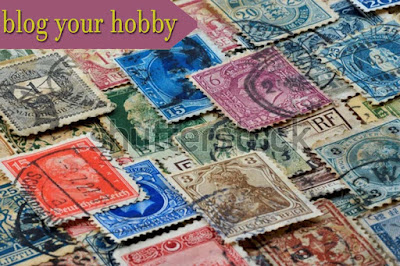Early Postage Stamps: Blog Makers
The first postage stamps for the prepayment of letter postage were issued in England in 1840. They were the brainchild of Rowland Hill, who successfully proposed them in his pamphlet Post Office Reform (1837). Postal charges were then determined mainly by the distance traveled (and the weight of the letter), but Hill proved that the main cost of transport was in the handling and sorting of letters rather than in their carriage. Hill further observed that, because most letters went through post unpaid and postage had to be collected from the recipient on delivery, many of them were refused and had to be returned, thus necessitating a two-way trip for no revenue. Hill proposed a radical change: that all postage be prepaid, and that letters be carried any distance within Great Britain for a fixed rate (which he suggested be a penny for each half-ounce).
With the backing of the Exchequer, Hill had two devices made: prepaid envelopes, and, for those wishing to use their own stationery, adhesive postage stamps. The prepaid envelopes were laughed out of existence owing to their ridiculous designs, but the stamps were an immediate success: a one-penny design in black and a two-penny one in blue, both bearing a profile of Queen Victoria, went on sale to the public on May 1, 1840, and were good for use from May 6. The postage stamp was adopted for use by the semiofficial City Despatch Post of New York City in 1842, and the next year the Brazilian empire and the Swiss cantons of Zürich and Geneva also issued stamps. In 1847 the U.S. government issued stamps of 5- and 10-cent value, bearing pictures of Benjamin Franklin and George Washington, respectively. Austria and various German states followed suit in 1850, after which the remaining countries of the world began to issue stamps.
These early stamps were printed on sheets of paper with no provisions for separating them from each other; this required the use of a knife or scissors to secure individual stamps. But in 1848–54 a machine was adapted by the British Post Office to provide stamps with separations in the course of their manufacture, and most stamps are now edged with tiny holes, called perforations, which enable them to be easily separated. Other innovations eventually followed; airmail stamps, used for letters carried especially by air, were first issued by Italy experimentally in 1917, with the first regular issue put out by the United States in 1918. Other types of stamps include special-delivery stamps, postage-due stamps, and semipostal stamps; the latter are sold at a premium over their face value, with the overage going to charity. Commemorative stamps are regular postage stamps issued to honour some event, activity, or person of national importance; unlike other regular postage stamps (known as definitives), they are printed only once and are allowed to go out of circulation as their supply is used up. The first commemorative stamp was issued by New South Wales in 1888, on the 100th anniversary of that Australian colony’s founding.
Collected from Britannica





